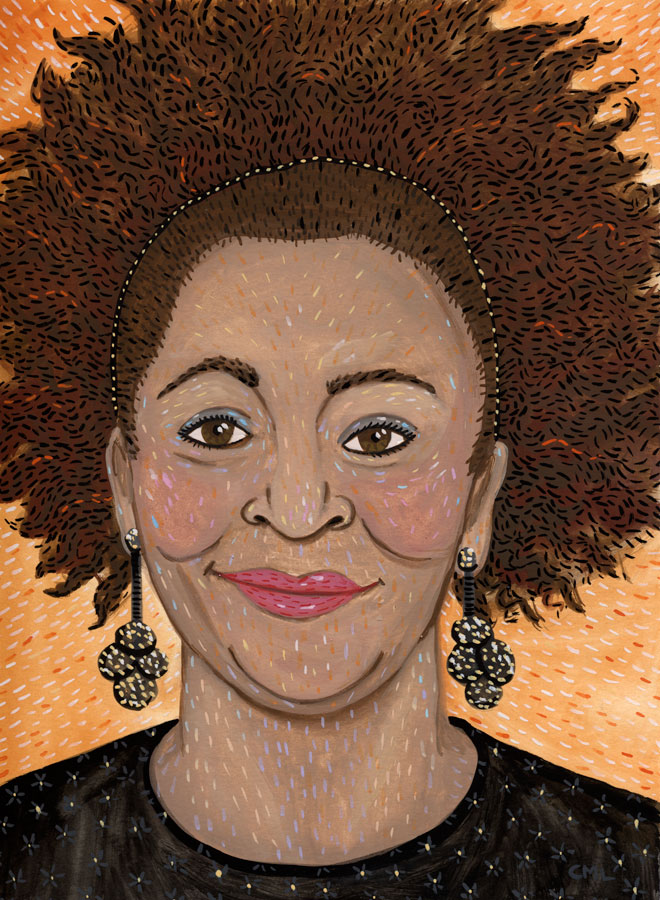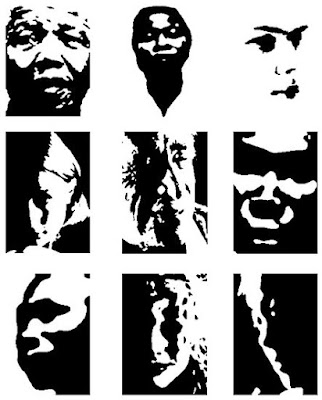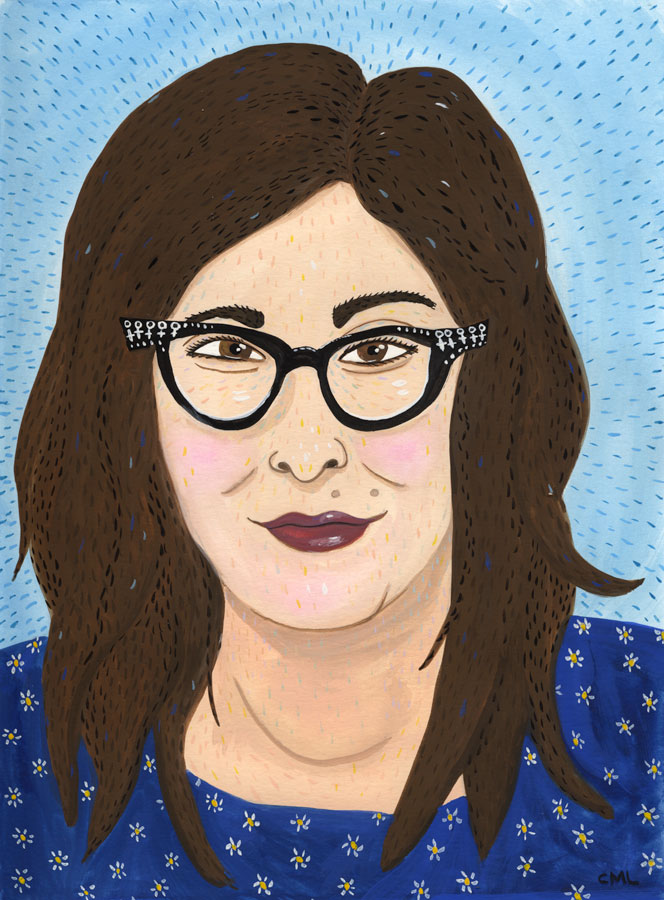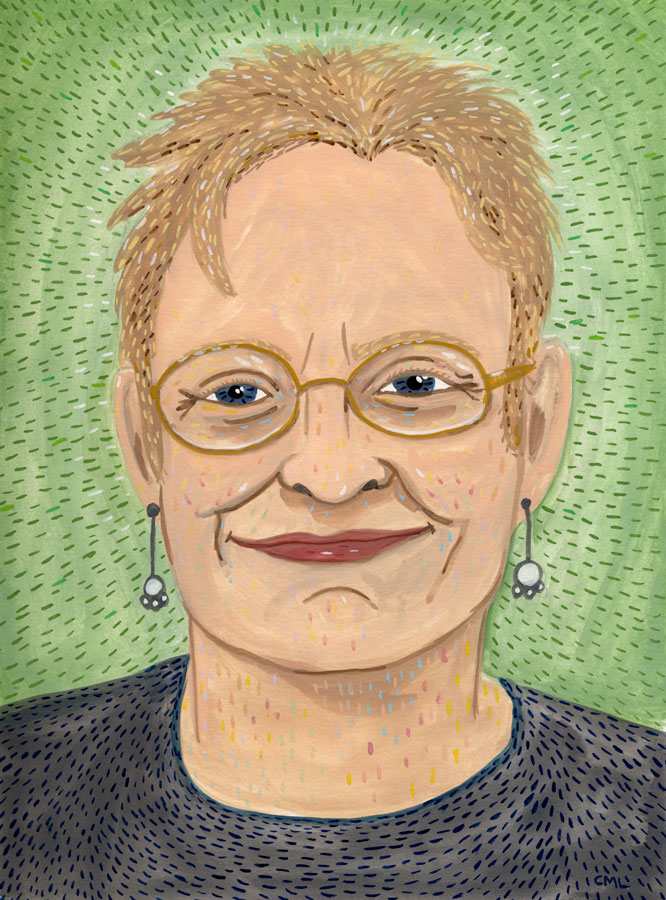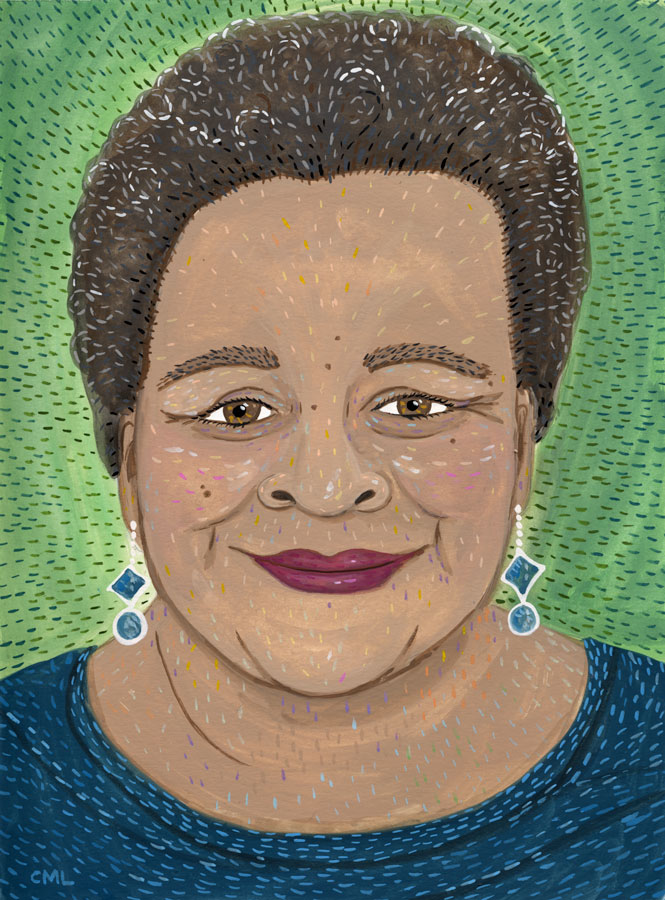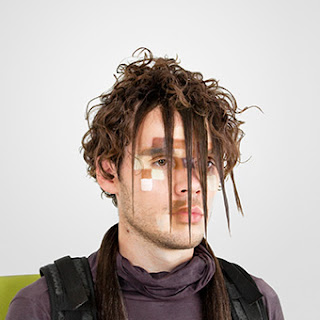Here's my version of The Tradeswoman at Tea (also translated as The Merchant's Wife, the classic Russian painting by Boris Kustodiev from 1819. 
There's a nice description and a bit of background on the original painting from the State Russian Museum over on this blog. 
And cartoonist and comics professor Lynda Barry has written an excellent essay on why copying artwork is such a good way of studying it. I agree, I don't feel I've really seen a piece properly until I've drawn it myself, learning all the different parts of it and wondering why the artist had a certain line ending in a certain place or admiring a positioning of colour to make something in the painting appear to leap forward. Read the whole essay on Lynda's blog. 
Viewing: Blog Posts Tagged with: portraits, Most Recent at Top [Help]
Results 1 - 25 of 295
Blog: Sarah McIntyre (Login to Add to MyJacketFlap)
JacketFlap tags: portraits, Add a tag
Blog: Sarah McIntyre (Login to Add to MyJacketFlap)
JacketFlap tags: portraits, Add a tag
Here's my take on today's #PortraitChallenge, a painting by Ilya Repin from around 1870, owned by one of my all-time favourite museums, the Russian State Museum in St Petersburg. (I like it even better than the Hermitage, even though the Hermitage is more grand.) Here's Repin's original:
I tried to draw it quickly in brown felt-tip marker for a change, then added some colour in Photoshop. Check out other people's drawings over at @StudioTeaBreak on Twitter! 
Blog: Christine Marie Larsen Sketchbook (Login to Add to MyJacketFlap)
JacketFlap tags: commissioned, SRoB, science, portraits, people, color, writers, editorial, faces, Add a tag
Blog: Sarah McIntyre (Login to Add to MyJacketFlap)
JacketFlap tags: morning_sketch, portraits, Add a tag
Here's my watercolour version of today's #PortraitChallenge. It's a portrait by Peter Paul Rubens and I discovered it first on the @medievalpoc account on Twitter. You can find out more about it on the Museum of Fine Arts Boston website.

And the pencil lines, before I coloured them in. Check out the other drawings over at @StudioTeaBreak, they're fab! :) 
Blog: Sarah McIntyre (Login to Add to MyJacketFlap)
JacketFlap tags: portraits, morning_sketch, Add a tag
Here's my drawing for today's @StudioTeaBreak #PortraitChallenge! I took a bit of liberty with her nose; I didn't want it to look like an exact copy of the photo. 
Here's the original, a platinum print photo by George Charles Beresford from 1902, at the National Portrait Gallery. See other people's drawings over here on Twitter! 
Blog: Sarah McIntyre (Login to Add to MyJacketFlap)
JacketFlap tags: morning_sketch, portraits, Add a tag
Here's our #PortraitChallenge drawings from last Thursday! This time we were riffing on a 1801 woodblock print by Japanese master Utamaro. I played around, drawing mine without looking at the paper. (Can you spot the messy one?) :)

You can see more over at @StudioTeaBreak.
Blog: Christine Marie Larsen Sketchbook (Login to Add to MyJacketFlap)
JacketFlap tags: SRoB, portraits, people, color, writers, editorial, commissioned, Add a tag
Blog: Sarah McIntyre (Login to Add to MyJacketFlap)
JacketFlap tags: portraits, morning_sketch, Add a tag
Blog: Sarah McIntyre (Login to Add to MyJacketFlap)
JacketFlap tags: portraits, Add a tag
Thanks to everyone who took part in Thursday's #PortraitChallenge, over on @StudioTeaBreak! Click on the links to see if any more pop up, and here's more information about painter Otto Dix and his 1926 subject, journalist Sylvia von Harden (whose painting self has a brief cameo in the opening of the film Cabaret). 

(Here was mine, a bit larger):
Blog: Christine Marie Larsen Sketchbook (Login to Add to MyJacketFlap)
JacketFlap tags: portraits, color, writers, exhibits, SRoB, Add a tag
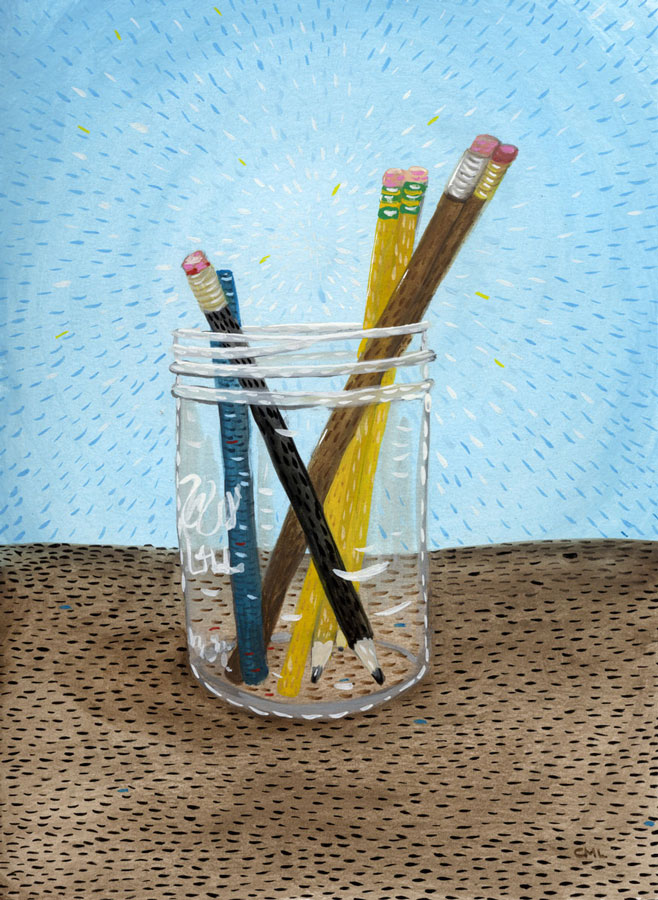
Come see this painting at the "Writers" show at Essentia in Belltown.
Opening Friday 6/10/16 6-9pm.
Join us for art, snacks, and readings by Sarah Galvin, Lesley Hazleton, and Maged Zaher
Push/Pull & Seattle Review of Books present
Writers:
A selection of portraits painted for the Seattle Review of Books of local and national authors, plus paintings of the objects of a writer's life.
Christine Marie Larsen is a Seattle illustrator. Her work has appeared in The New York Times, Travel & Leisure, The Stranger, and more. Her illustrations explore the serious and sill aspects of this life on earth.
Artist Reception will include readings from Lesley Hazleton, Maged Zaher, and Sarah Galvin.
Come join us for an evening of local authors and art. We also have a Little Free Library to browse and borrow from. Refreshements will be provided.
This show is made possible through The Betterhood at Essentia World's Only Natural Memory Foam.
Essentia Mattress Store - Seattle
2008 1st Ave, Seattle, Washington 98121
Add a Comment
Blog: Christine Marie Larsen Sketchbook (Login to Add to MyJacketFlap)
JacketFlap tags: editorial, faces, commissioned, SRoB, portraits, people, color, writers, Add a tag
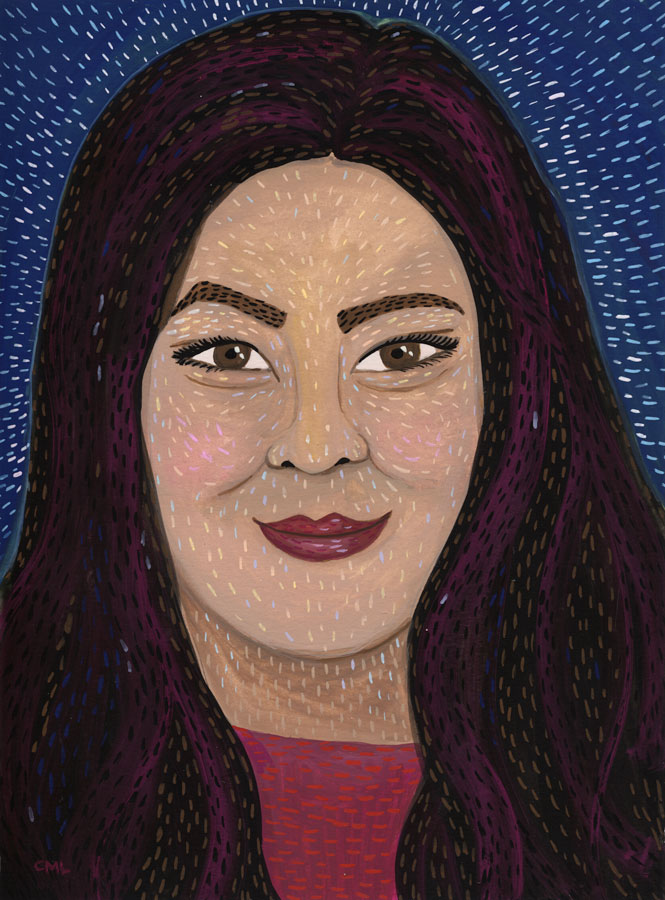
A SRoB portrait of TIME magazine correspondent Jay Newton-Small, author of Broad Influence: How Women Are Changing the Way America Works.
Add a Comment
Blog: Gurney Journey (Login to Add to MyJacketFlap)
JacketFlap tags: Portraits, Visual Perception, Add a tag
At the moment we recognize the face, the facial recognition areas in our brain become active.
Read about this and other illusions in the bookazine Scientific American Mind 187 Illusions (Scientific American Special Edition,Fall 2013)
Blog: Christine Marie Larsen Sketchbook (Login to Add to MyJacketFlap)
JacketFlap tags: portraits, people, color, writers, editorial, faces, commissioned, SRoB, Add a tag
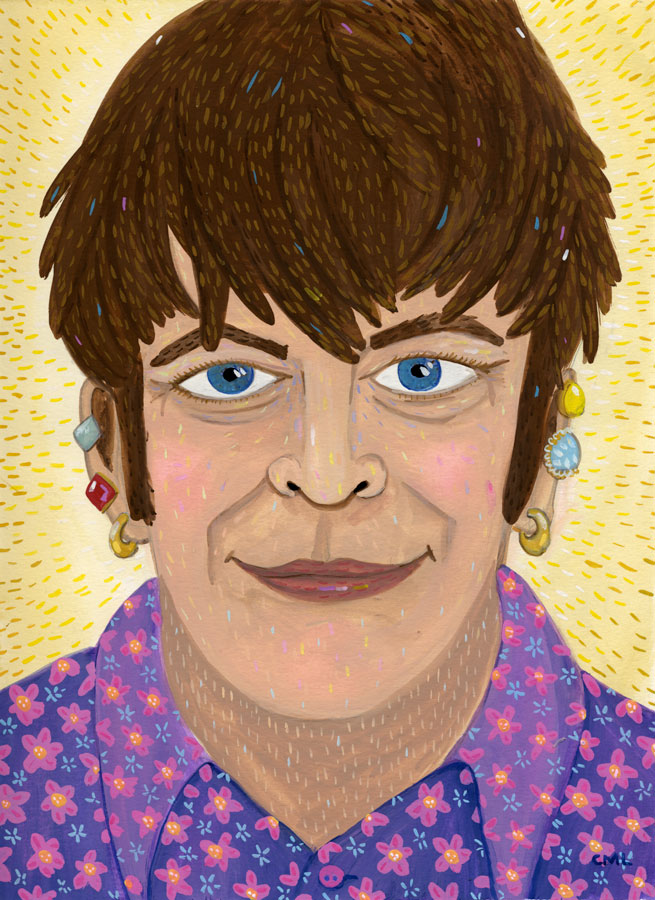
Author and activist Mattilda Bernstein Sycamore for the Seattle Review of Books Portrait Gallery
Add a CommentBlog: Gurney Journey (Login to Add to MyJacketFlap)
JacketFlap tags: Video, Portraits, Watercolor Painting, Plein Air Painting, Add a tag
Yesterday Jeanette and I decide to try out an experiment.
It's the day before graduation at Bard College. Students are roaming around campus with their parents. We place the typewriter on a table in the student center, and I arrange the sketch easel.
We hope the typewriter will lure someone to pose for an impromptu portrait. First Cullan, and then his mom, try it out.
We set up the iPad to webcast the action via Facebook Live. The first session has audio issues due to problems with our old iPad (sorry). We switch over to an Android cellphone, and then it works fine. Here's the 16 minute webcast. (Link to video).
I start sketching Jeanette, but abandon the start and turn the page when Kathleen sits down. I lay down a few lines in watercolor pencils, then launch off with brush and watercolor to place the main shapes. With progressively smaller brushes, I place the smaller details.
 |
| Kathleen, watercolor and gouache |
Subscribe and follow and you won't miss a future webcast.
GurneyJourney YouTube channel
My Public Facebook page
GurneyJourney on Pinterest
JamesGurney Art on Instagram
@GurneyJourney on Twitter
Blog: Gurney Journey (Login to Add to MyJacketFlap)
JacketFlap tags: Portraits, Gouache, Add a tag
-----
If you do other social media, please follow or subscribe. I often put different stuff on those channels:
Instagram @jamesgurneyart
Twitter @GurneyJourney
Facebook @JamesMGurney
Pinterest @GurneyJourney
Blog: Christine Marie Larsen Sketchbook (Login to Add to MyJacketFlap)
JacketFlap tags: SRoB, portraits, people, color, writers, editorial, faces, commissioned, Add a tag
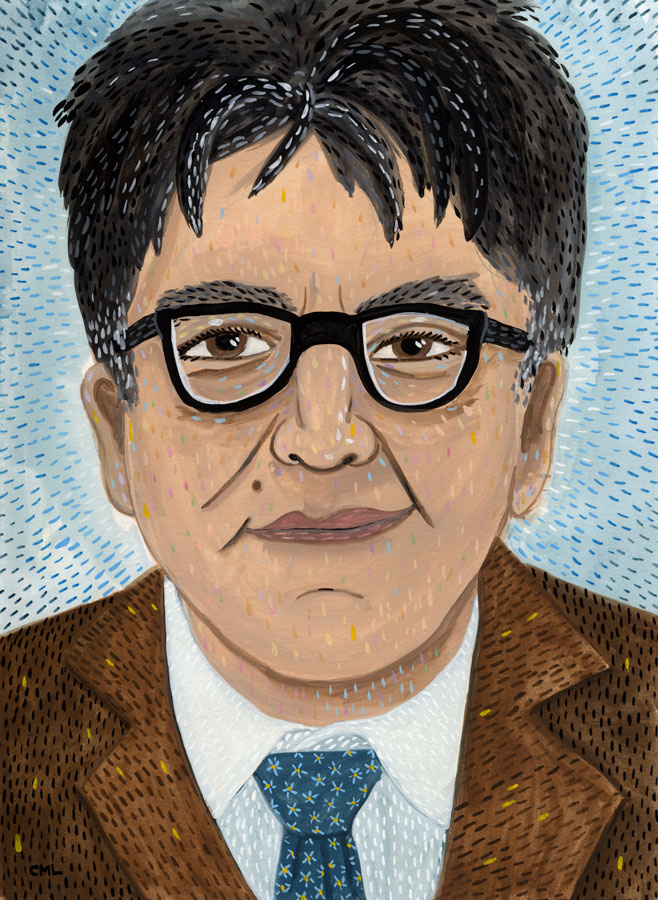
Here's a gouache on paper illustration of author and poet Sherman Alexie for the Seattle Review of Books Portrait Gallery
Add a CommentBlog: Christine Marie Larsen Sketchbook (Login to Add to MyJacketFlap)
JacketFlap tags: portraits, people, writers, editorial, faces, commissioned, SRoB, Add a tag
Blog: Sarah McIntyre (Login to Add to MyJacketFlap)
JacketFlap tags: portraits, morning_sketch, Add a tag

Well, that's my fancy dress sorted for Shakespeare's 400th birthday party! Today's #PortraitChallenge was this engraving by Martin Droeshout, tweeted by the British Museum. Their website says it's 'from the Third Folio of Shakespeare’s works of 1663–1664 and was originally engraved for the title page to the First Folio, published in 1623. It is therefore one of the earliest portraits of Shakespeare.' (Read more here.) Lots of people have taken part; check out their pictures over at @StudioTeaBreak! 
Blog: Christine Marie Larsen Sketchbook (Login to Add to MyJacketFlap)
JacketFlap tags: SRoB, portraits, people, color, writers, editorial, faces, commissioned, Add a tag
Blog: Christine Marie Larsen Sketchbook (Login to Add to MyJacketFlap)
JacketFlap tags: portraits, people, color, writers, editorial, commissioned, SRoB, Add a tag
Blog: Gurney Journey (Login to Add to MyJacketFlap)
JacketFlap tags: Portraits, Add a tag
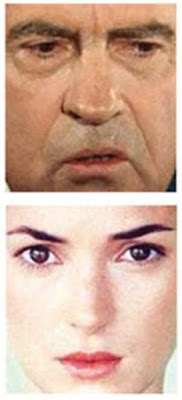 |
| Richard Nixon and Winona Ryder |
 |
| Anselm van Hulle, 1649. Anna Margareta |
J. Sadr, I. Jarudi, and P. Sinha, B, The role of eyebrows in face recognition, [Perception, vol. 32, pp. 285–293, 2003.
Blog: Gurney Journey (Login to Add to MyJacketFlap)
JacketFlap tags: Portraits, Lighting, Add a tag
Sir John Leighton, the Director-General of the Scottish National Gallery, served as both painter's model and keynote speaker at the Portrait Society's annual conference yesterday.
 |
| Sir John Leighton by James Gurney, black and white gouache, 3 x 3 inches |
Mr. Neal lit him with a two-source lighting scheme inspired by Anders Zorn (Swedish, 1860-1920). The lighting scheme produces a shadow core in the center of the form and often puts the eyes in shadow.
In the case of this Zorn, those dark accents in the face float in the middle of a sea of creamy white, the reverse of the usual tonal scheme of a portrait.
Watch a 15-second video clip of my sketch in context on my Instagram, Twitter, or Facebook page.
Split lighting
Blog: Gurney Journey (Login to Add to MyJacketFlap)
JacketFlap tags: Portraits, Add a tag
If you weren't able catch my portrait demo at the Portrait Society of America conference in Washington, no worries! Here's a front row seat, complete with super-speed action, blow-by-blow narration, and cheat-sheet notes. (Link to YouTube)
Blog: Gurney Journey (Login to Add to MyJacketFlap)
JacketFlap tags: Portraits, Add a tag
 |
| Photo by Caleb |
Other Face-Off participants included Carol Arnold, Anna Rose Bain, Judith Carducci, Casey Childs, Romel de la Torre, Michelle Dunaway, Max Ginsburg, Quang Ho, Robert Liberace, Ricky Mujica, Teresa Oaxaca, Alicia Ponzio, and Elizabeth Zanzinger.
Blog: Gurney Journey (Login to Add to MyJacketFlap)
JacketFlap tags: Portraits, Add a tag
 |
| Faces identified in red. Green square indicates no face detected. Via CVDazzle |

In a new confluence of couture fashion and privacy activism, a group of hackers is adopting the methods of dazzle camouflage to disrupt face-detection technology.
Read more: Camouflage from Face Recognition Technology
Scientific papers on deep learning systems for movement recognition
Previous post: Dazzle Camouflage
Wikipedia on Facebook's DeepFace system
View Next 25 Posts




